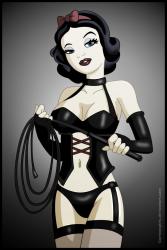1




















| Thumbs Up |
| Received: 35,744 Given: 17,041 |

Back in 1959 a fisherman couldn’t afford to buy a Christmas gift for his daughter, so he carved a doll from his imagination – the Troll Doll
Source: http://www.thevintagenews.com/2016/0...on-troll-doll/
Once upon a time, actually back in 1959, a Danish woodworker and fisherman, Thomas Dam, was going through a period of financial distress and couldn’t afford to buy a Christmas gift for his daughter Lila. That didn’t prevent him from using his wood carving skills and imagination to create a doll for his daughter.
Little Troll Doll with pink hair.
Other children in the Danish town of Gjřl saw the troll doll and wanted one. Dam’s company Dam Things began producing the dolls in plastic under the name Good Luck Trolls. At that time, the Troll figures were made of natural rubber and were filled with wood shavings. The wigs were sewed together of small pieces of sheepskin. The clothes were sewed on the Troll. Everything was hard work, but sales went well, and it made the family’s living. Soon, the little back building became too small and the Dam family had to build a factory.
Dam earned enough to buy himself a small factory where the dolls were produced. He created many different trolls, as well as plastic baby dolls. Dam formed “Dam Things” to market the dolls. The dolls became popular in several European countries during the early 1960s, shortly before they were introduced in the United States.
Kids playing with Troll dolls.
Thousands of Trolls traveled into the big world. As sales increased, a more rational way of producing Trolls was necessary. Therefore a new kind of plastic had to be used to make the Troll’s body on a machine. The hard vinyl fabric also had the advantage that it lasted longer than the natural rubber. The rest of the production of Trolls is still mostly handmade. This ensures that the quality is the best and that each Troll is something very special.
Nearly all trolls are made out of hard vinyl, although they have been made out of nearly every other material you can imagine including ceramics, rubber, porcelain, and even hemp. Trolls have jointed arms and heads (although some have unjointed arms) and plastic or glass eyes, with a little sprout of hair on their heads.
A “wizard” troll doll, manufactured by Russ Berrie in the 1990s.
The Trolls became one of the United States’ biggest toy fads from the autumn of 1963 to 1965. The originals were of the highest quality, featuring sheep wool hair and glass eyes. Their sudden popularity, along with an error in the copyright notice of Thomas Dam’s original product, resulted in cheaper imitations.
Troll Dolls.
The Dam company never stopped their production of trolls in Denmark, where they were always a popular item. In the late 1980s, the Dam trolls started making another comeback in North America. The E.F.S. Marketing Associates, Inc was one of the few corporations which were granted permission to import and market the Thomas Dam trolls for resale in the United States. These Dam Trolls were marketed under the trade name of Nordin (R) Trolls, with the Adopt A Norfin Troll logo on the tags.
In 2003, Toy Industry Association named troll dolls to its Century of Toys List, a list of the 100 most memorable and most creative toys of the 20th century.
There are currently 1 users browsing this thread. (0 members and 1 guests)
 Japan
Japan
Bookmarks